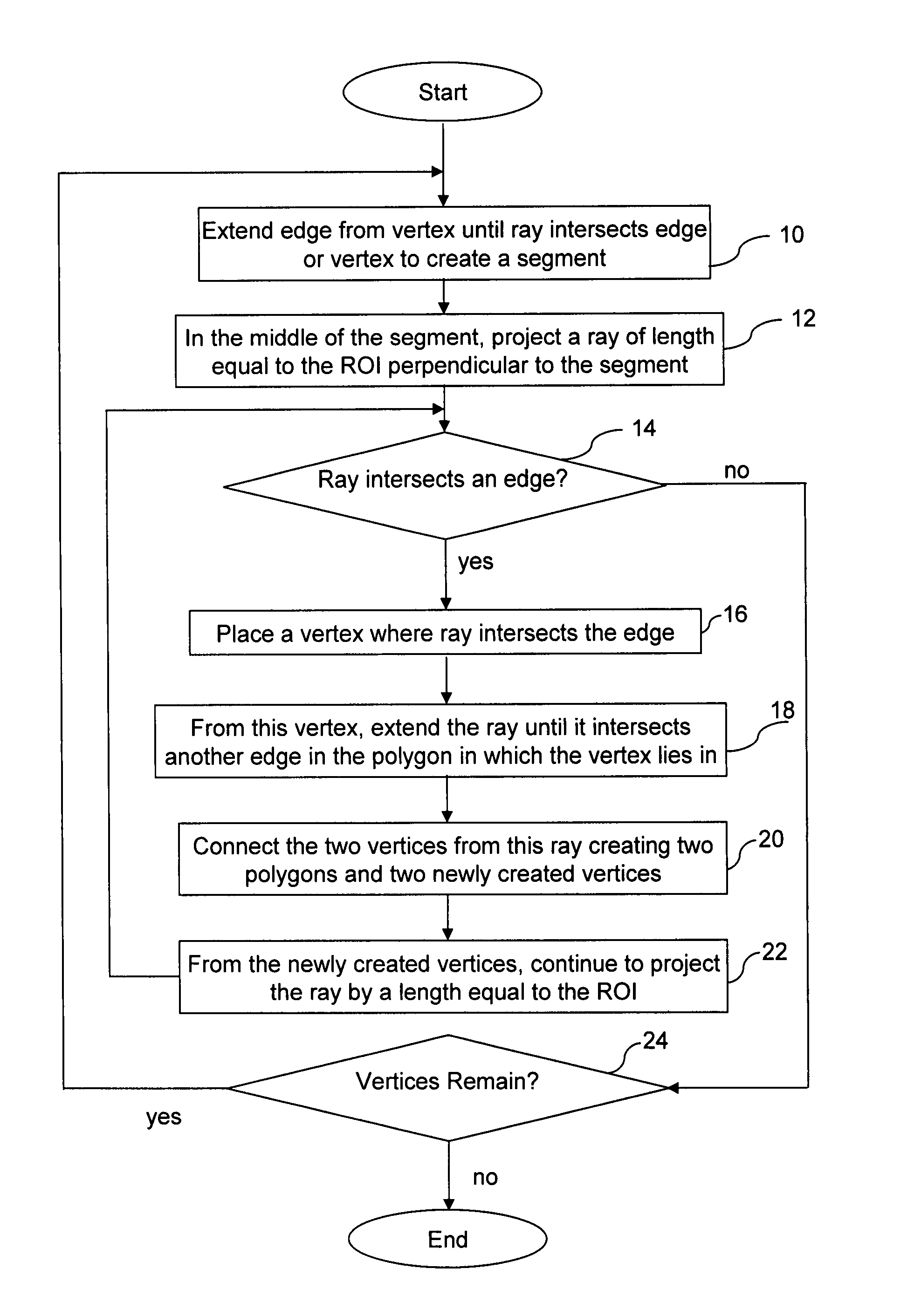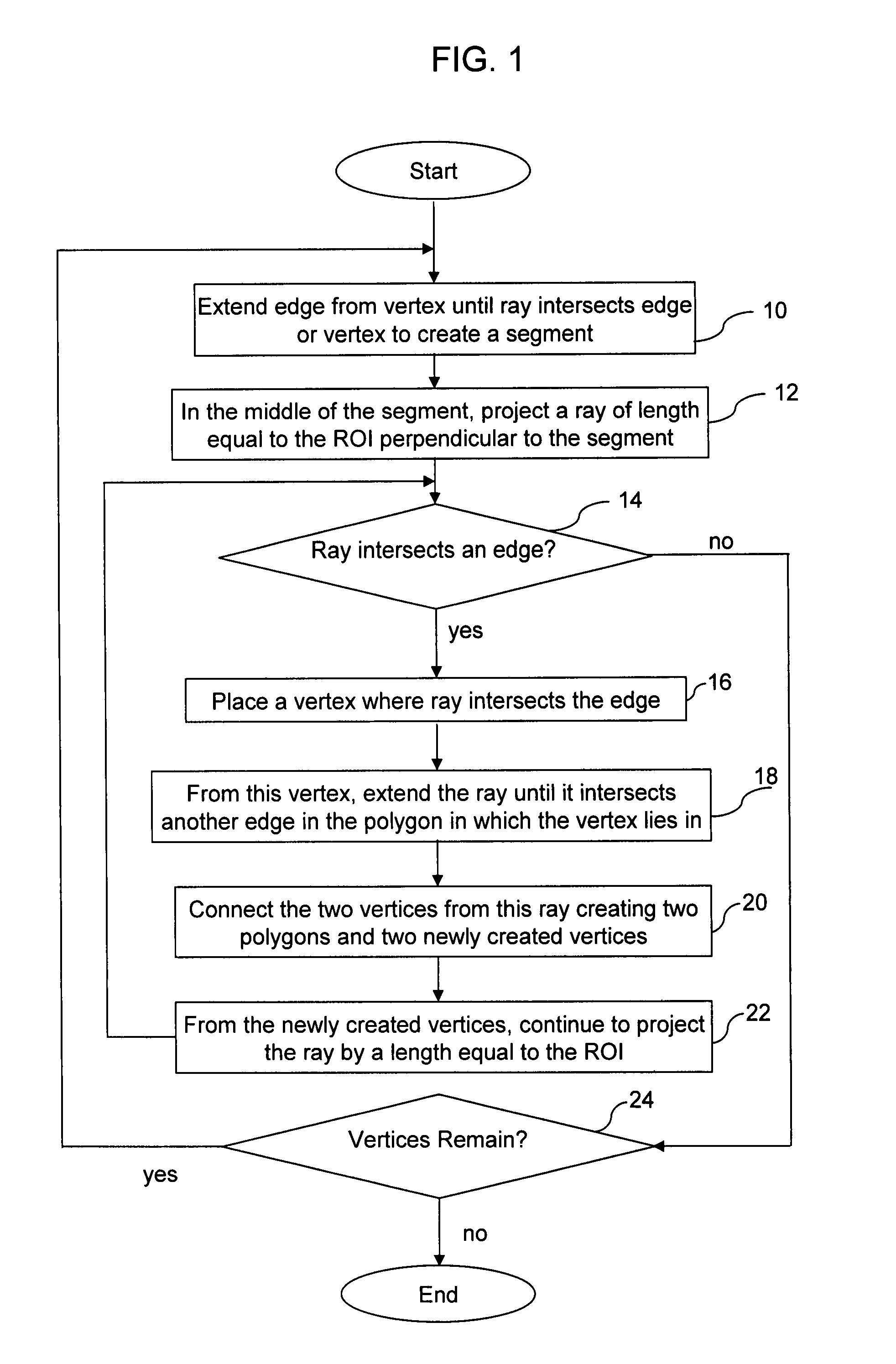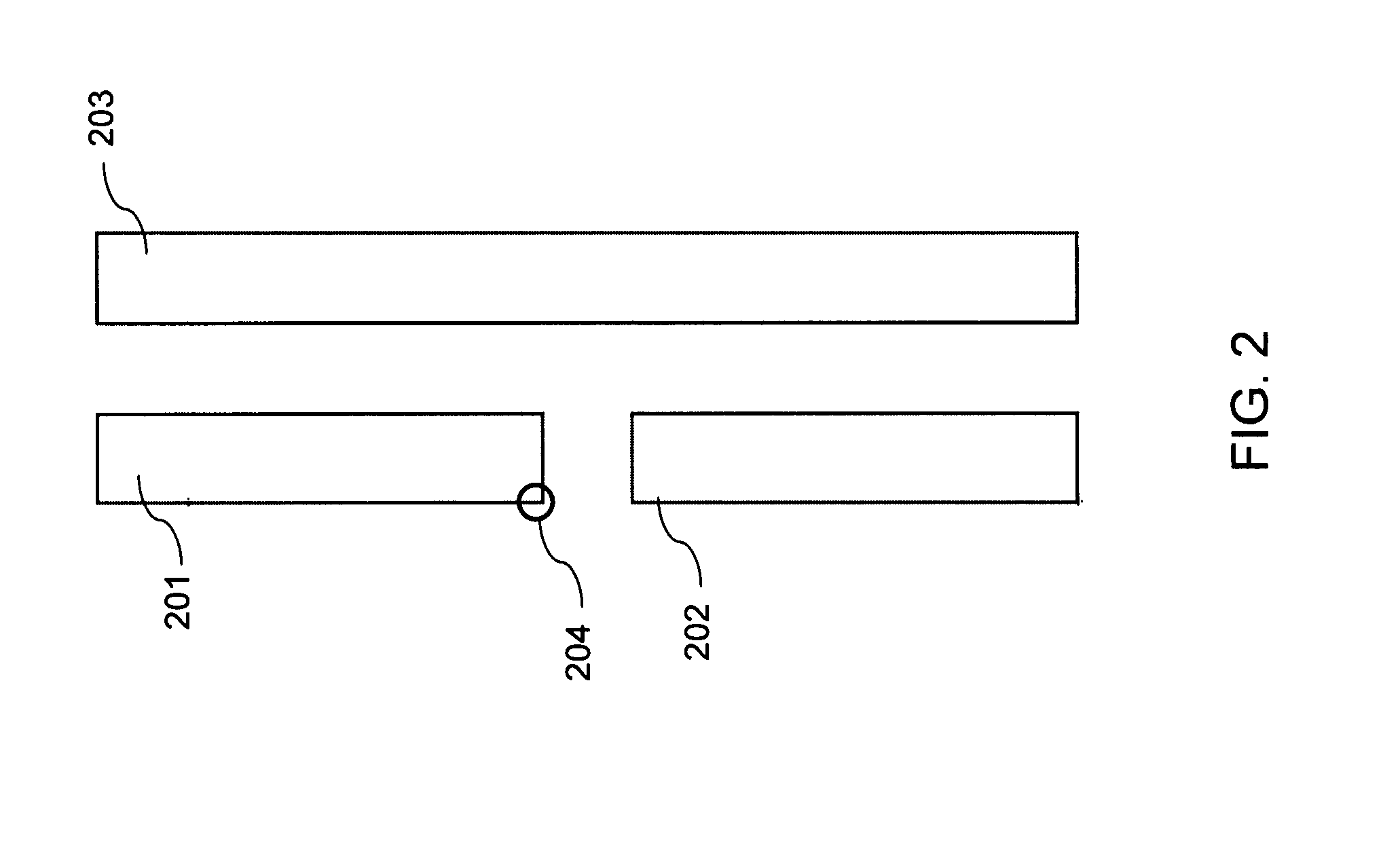Method, program product and apparatus for performing decomposition of a pattern for use in a DPT process
a target pattern and decomposition technology, applied in special data processing applications, optics, instruments, etc., can solve the problems of not being able to image individual features, being difficult to reproduce target patterns on wafers, and current fragmentation/splitting algorithms can be quite complex and time-consuming, so as to achieve simple and efficient effects
- Summary
- Abstract
- Description
- Claims
- Application Information
AI Technical Summary
Benefits of technology
Problems solved by technology
Method used
Image
Examples
Embodiment Construction
[0023]The pattern fragmentation process of the present invention provides a method for splitting polygons of a target pattern into multiple polygons, which are subsequently colored in the DPT process. As explained in further detail below, the method splits a polygon into multiple polygons by fragmenting edges created by convex vertices in negative areas of the pattern and by fragmenting edges created by concave vertices in positive areas of the target pattern. The fragmentation process entails extending a ray (or vector) from each vertex until the ray intersects another vertex or edge. This intersection may cause a split in a neighboring polygon if the neighboring polygon is within a region of influence (ROI) with the vertex from which the ray emanates. The process of determining whether or not the given polygon is split is set forth below. It is noted that the target pattern is preferably described in a data format, such as “gds”, which is a standard data format. However, any other...
PUM
| Property | Measurement | Unit |
|---|---|---|
| wavelength | aaaaa | aaaaa |
| length | aaaaa | aaaaa |
| time | aaaaa | aaaaa |
Abstract
Description
Claims
Application Information
 Login to View More
Login to View More - R&D
- Intellectual Property
- Life Sciences
- Materials
- Tech Scout
- Unparalleled Data Quality
- Higher Quality Content
- 60% Fewer Hallucinations
Browse by: Latest US Patents, China's latest patents, Technical Efficacy Thesaurus, Application Domain, Technology Topic, Popular Technical Reports.
© 2025 PatSnap. All rights reserved.Legal|Privacy policy|Modern Slavery Act Transparency Statement|Sitemap|About US| Contact US: help@patsnap.com



